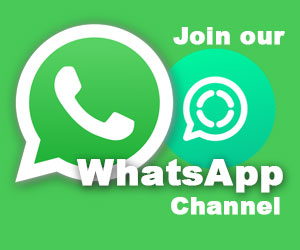
Saturday, 19th June 2021: Sickle cell disease, (SCD), affects millions of people worldwide. Sickle cell disease is one of the most common genetic diseases worldwide and its highest prevalence occurs in Middle East, Mediterranean regions, Southeast Asia, and sub-Saharan Africa especially Nigeria.
Sickle cell anaemia is a genetic red blood cell disorder. People with sickle cell disorders don't have enough healthy red blood cells to carry oxygen throughout the body. Sickle cell disease makes normal life difficult and patients need regular blood transfusions.
Investigation shows that Sickle cell disease is most common among people whose ancestors come from Africa; Mediterranean countries such as Greece, Turkey, and Italy; the Arabian Peninsula; India; and Spanish-speaking regions in South America, Central America, and parts of the Caribbean.
The vast majority of individuals with sickle cell disease (SCD) are born in sub-Saharan Africa, where easy access to high-intensity medical care may be limited to varying degrees.
Therefore, the greatest burden of SCD is in sub-Saharan Africa, where access to medical care and public health strategies to decrease mortality and morbidity are not uniformly available. Over 300,000 babies are born with SCD annually; this number is expected to increase to up to 400,000 individuals by 2050.
Nearly 90 percent of the world's SCD population lives in three countries: Nigeria, India, and the Democratic Republic of Congo, where the disease affects up to 2 percent of the population, and the carrier prevalence rate (sickle cell trait) is as high as 10 to 30 percent.
Nigeria alone has been estimated to have at least 150,000 newborns born with SCD annually. Estimates are challenging because of the lack of federal newborn screening programs; however, approximately 700,000 births occur per year and the prevalence of SCD in newborns was 3 percent in a regional newborn screening program.
World Sickle Cell Day, observed every year on June 19, aims to raise awareness of sickle cell disorders. This day is observed annually with the goal to increase public knowledge and understanding of sickle cell disease, as well as the challenges experienced by patients and their families and caregivers. Sickle Cell Disease is an inherited blood disorder that affects red blood cells.
The theme for this year’s celebration is: “Shine the Light on Sickle Cell Disease”.
The United Nations General Assembly, on December 22, 2008, adopted a resolution recognizing sickle cell disease as a public health problem. Sickle cell disease occurs more often among people from parts of the world where malaria is or was common. It is believed that people who carry the sickle cell trait are less likely to have severe forms of malaria.
The World Health Organization and United Nations have designated SCD as a global public health problem. Recall that one of the World Federation of Public Health Associations millennium development goals was targeted at reducing child mortality by two-thirds between 1990 and 2015.
Despite the major interventions in malaria, HIV, and immunization, most of the 19 countries estimated to have a persistently high under-five mortality rate by 2015 (above 50 per 1000) are in Africa. We believe that the high prevalence of undiagnosed non-communicable diseases, including SCD, contribute to excess mortality in children under five years.
The regions of Africa with a high incidence of SCD are also associated with the highest density of malaria. Although the sickle mutation at one allele of the beta-globin gene (heterozygosity) confers a survival advantage in malaria endemic areas, especially for children, inheritance of the mutation at both alleles (HbSS) predisposes individuals to severe malaria and increased malaria mortality, as well as increased mortality from other complications of SCD.
In high-income countries, the survival of individuals with SCD has been steadily increasing, often well into adulthood. In contrast, SCD-related childhood mortality in Africa remains as high as 50 to 90 percent, with fewer than half of affected children reaching their fifth birthday. An indication of the extremely high mortality rate throughout childhood and adolescence is the observation that adult prevalence of HbSS is 10-fold less than the birth incidence (0.2 to 0.3 percent versus 2 to 3 percent)
Malaria (treatment) — The prompt initiation of malaria treatment is important both for managing the infection as well as treating or reducing the associated manifestations of SCD such as vaso-occlusive pain and worsening hemolytic anemia.
In children with SCD, malaria infection is associated with severe hemolysis and typically presents with fever, brown-coloured urine, acute fatigue, and vaso-occlusive pain. In adults with SCD, malaria infection causes a similar clinical presentation and is associated with vaso-occlusive pain episodes. Thus, prompt initiation of anti malarial therapy among acutely ill patients with SCD and confirmed malaria infection is important in the management of both conditions.
In Nigeria, SCD forms a small part of the clinical practice of most general duty doctors, as there is gross absence of dedicated sickle cell centres. Thus, it may be difficult to keep abreast of current knowledge and practices in the treatment of SCD.
What are the efforts of Nigerian government to take care of the disease?
The care available for SCD in Nigeria is still suboptimal and there is an urgent need for concerted effort to tackle the problem, but to make a significant impact on the burden of the disease would require more focus at the primary care level. Some steps to achieving this are outlined, Nigerian government needs to provide a certain body and agencies that will focus on how to minimize the spread of this disease by creating of adequate awareness and orientation to the youth who are not yet married, and who are about to get marry. Counselling on who and who to get married with, is needed, enlightenment about the needs for genotype blood test before marriage should be prioritised.
Do we have facilities to take care of sickle cell in Nigeria?
Nigeria have only the National Sickle Cell Centre, (NSCC), is strategically located opposite the Lagos University Teaching Hospital to take care of the population with SCD. The NSCC will encourage the development of collaborating Sickle Cell Centres in each state of the federation. The State Centres would in turn support and supervise the operation of Sickle Cell Clubs within their state, thus making for a harmonious coordination of all credible sickle cell organisations in the country.
With this, it is imperative to state that the Nigerian government needs to do more in providing more centres that would be enough in take care of the large number of people living with the disease.
In the meantime, there is need to appreciate the commendable effort of a non-governmental organisation, Sickle Cell Hope Alive Foundation, (SCHAF) for her awareness and support to SCHAF members.
SCHAF, a non-governmental non-profit Organization, is dedicated to enhance awareness and educate Nigerians on Sickle Cell Disease. It also wishes to bring hope, create happy memories improve the quality of life for individuals who experience life-altering situations caused by Sickle Cell Disease (SCD).
The Foundation is blessed with a multidisciplinary team of Researchers, Medical and community-oriented professionals, all working together to assist in facilitating improved care of those affected with SCD.
SCHAF assists children, young adults and their families through several key programmes. In keeping with its mission, SCHAF believe in celebrating life and encouraging those affected by SCD and their families to remain hopeful. These efforts are made possible through the generosity of caring individuals, corporations and foundations across the Country.
World Sickle Cell Awareness Day: Key things to know
• People with sickle cell disorder need regular checkups with their doctor.
• It is important to follow treatment and medication prescribed by their doctor.
• Preventing infections by taking simple steps including washing their hands are a must.
• Practicing healthy habits like drinking enough water and eating nutritious food are crucial.
Symptoms of sickle cell disorder
• Signs and symptoms of sickle cell anaemia usually appear around five months of age and they vary from person to person and may change over time.
• Patients with sickle cell disorder suffer from anaemia as their red blood cells die easily leading to shortage of healthy cells.
• The body does not get enough oxygen without adequate red blood cells and this causes fatigue.
• Episodes of pain are a major symptom of sickle cell anaemia but it varies from person to person. It can last for a few hours to a few weeks.
• Swelling of hands and feet and frequent infections are common.
• Shortage of healthy red blood cells can lead to slower growth in children






















